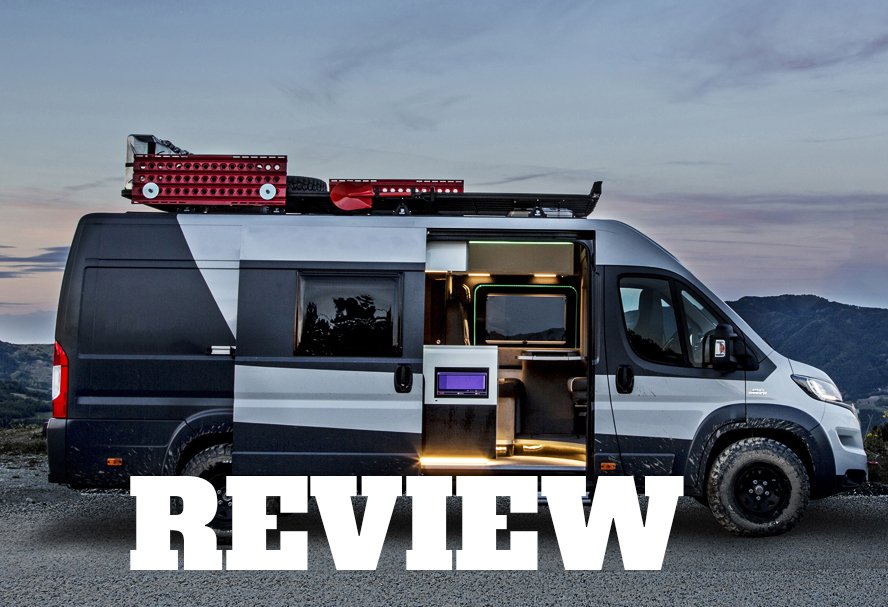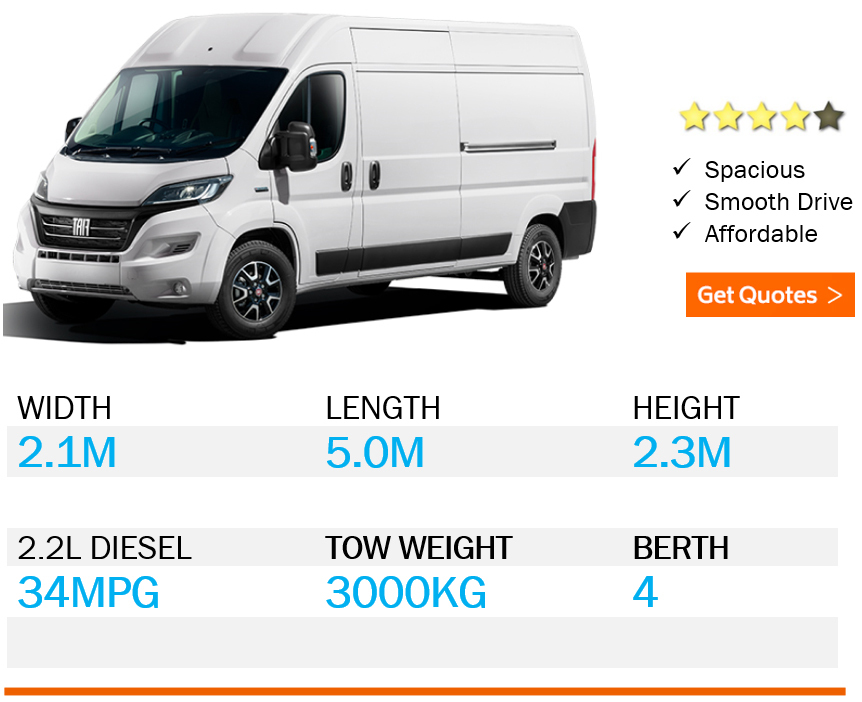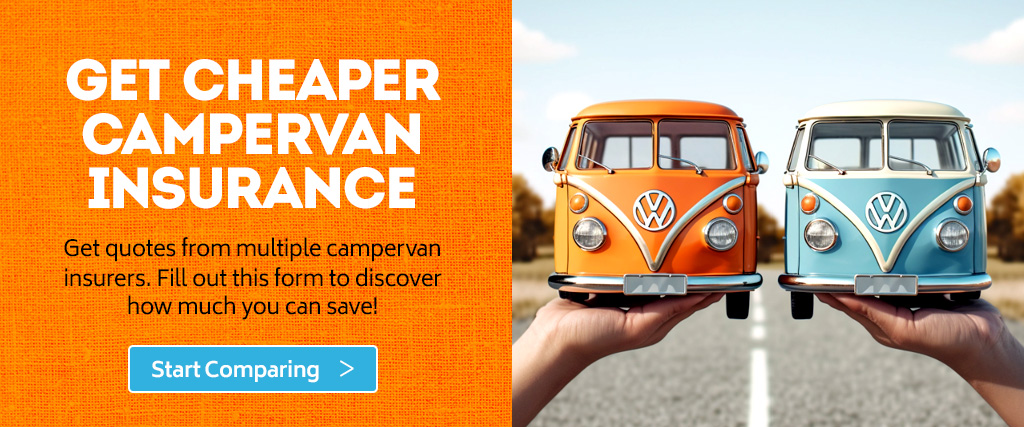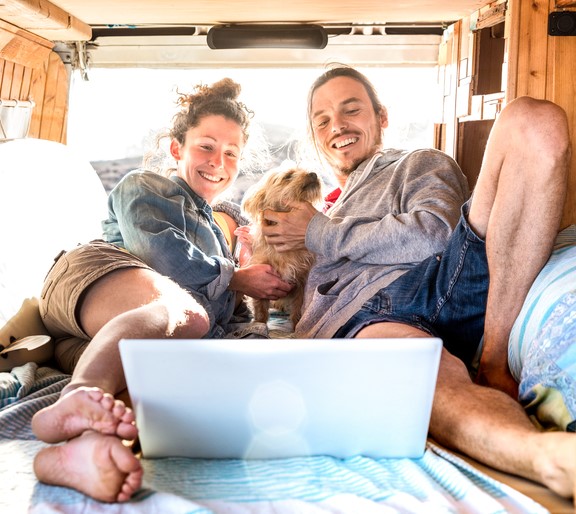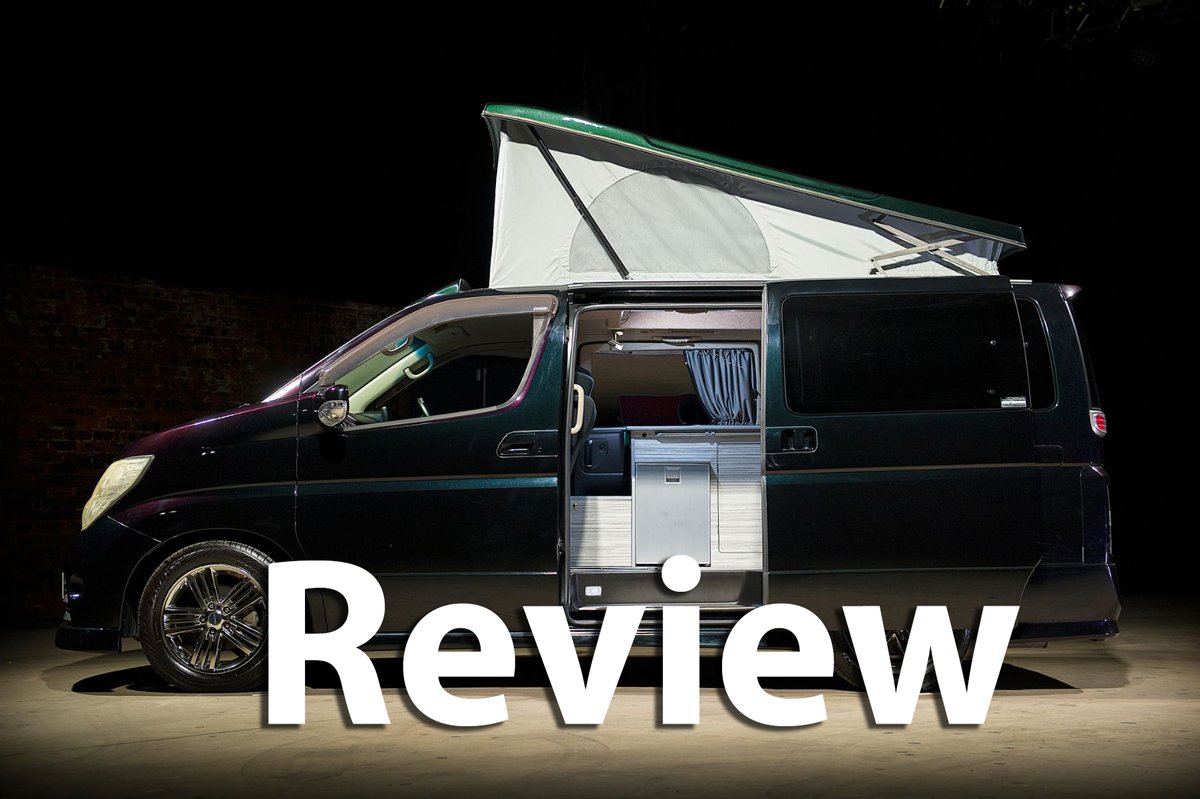
Nissan Elgrand Campervan Review
September 27, 2022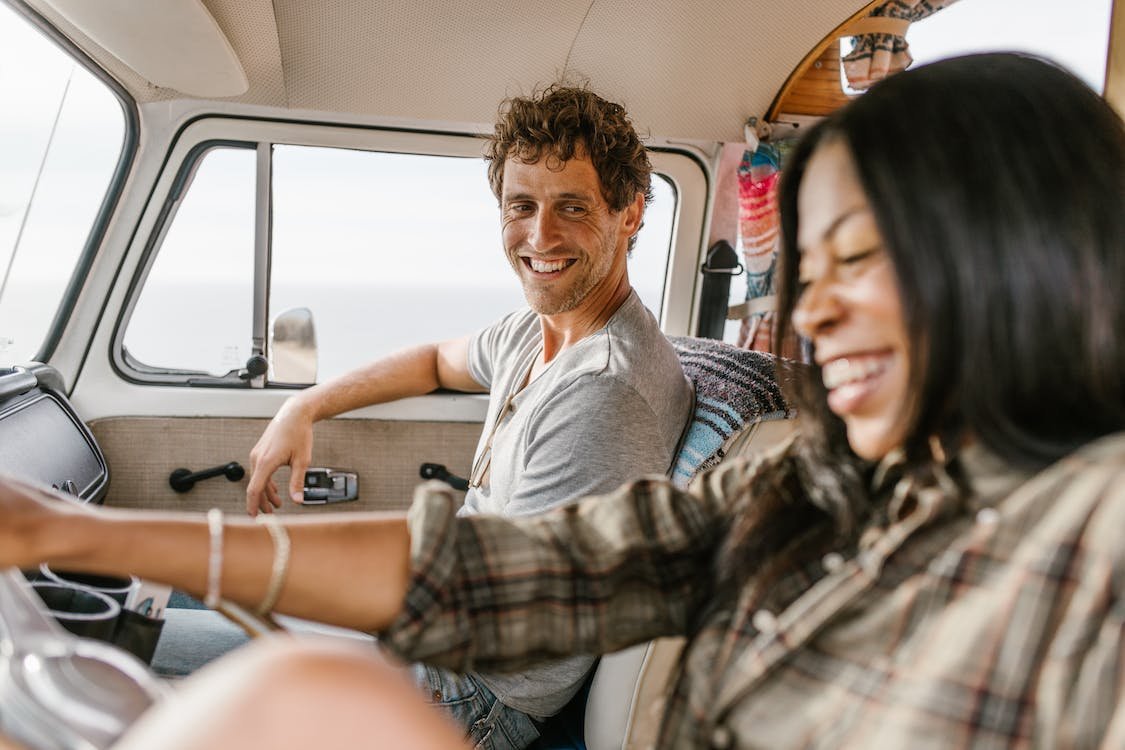
Buying Insurance for Campervan Conversions – Everything You Need to Know
December 2, 2022The history of the Fiat Ducato
The Fiat Ducato is classed as a light commercial vehicle, and it’s been manufactured by Sevel in partnership with Stellantis since 1981. In its third official generation (although considered to be its fourth since 2014), there are a huge variety of models of Ducato that have been made throughout the years.
The van has also been sold around the world under a number of different names for a variety of different car manufacturers as well. The same van, with maybe a few very minor tweaks, has been sold as the Citroen Jumper, the Citroen Relay, the Peugeot Boxer, the Ram ProMaster, the Alfa Romeo AR6 and the Vauxhall Movano.
The Ducato is very much a commercial vehicle, which has its pros and cons when converted into a campervan. It’s popular for its space and ease of conversion but the ride is pretty rough at times. This is very much a campervan for the destination, rather than the journey.
The most recent Fiat Ducato models have a 2.2 litre Diesel engine, although some previous models that are still sold have a marginally bigger 2.3 litre engine. There is an electric variant of the van that’s also sold too – the Fiat E-Ducato.
Despite the limited choice of engine sizes, there are actually a huge number of combinations you can pick from for a Fiat Ducato if buying brand new. There are different size bodies, different bases and different powered engines ranging from 120hp to 180hp.
The variety of options available also helps it to remain a popular choice for campervan conversions, since there are some combinations that are perfectly suited to the best camping experience.
Pros:
- Plenty of power
- Loads of space for converting
- Automatic gearbox works surprisingly well
- Can carry massive weights – heavier conversion items possible
Cons:
- Drive quality is poor – expect a bumpy ride
- The engine is loud
Quirks:
- Almost no two Ducatos will be the same due to combination options
- Cab can be a little awkward – taller drivers might be a little cramped
Fiat Ducato Campervan Review: What’s Inside?
The Fiat Ducato as a standard commercial van has a lot of positives, but as a campervan it really is an excellent option. And part of that is down to the fact that it is one of the few campervan conversions that is officially endorsed by the manufacturer themselves.
Indeed there is a dedicated FiatCamper website where you can learn all about the official partners of Fiat producing the campervan, and find out more about the options available.
And if you decided to order a FiatCamper direct from one of these endorsed motorhome manufacturers, you also benefit from Fiat’s own roadside assistance that covers 51 countries.
Regardless of whether you decide to order from a Fiat-approved converter, or an independent specialist, or you convert your own, you’ll find that the Ducato has a tonne of potential as a campervan.
That’s because of the large interior size (depending on your choice of Ducato) and the fact that it’s one of the squarest vans being made, which really helps you to maximise the space that’s available. There are very few curves that make conversion difficult or limit what you can do.
As a starting point the Ducato is relatively basic (in the rear at least – there’s a tonne of entertainment options for the cab if you want to pay extra). So, don’t expect much of a helping hand if you want to convert your own, but again we come back to the potential of the van.
Optional extras available through Fiat that you will want to consider include:
- Captain chairs (both driver and passenger) which can swivel and slide into the interior space
- Option to add an additional heater
- USB charging
- Apple CarPlay or Android Auto
- Built-in display with satnav
- Various safety features including roll over mitigation, trailer stability and Traction+
Driving performance is mixed. In terms of power and cornering, it’s pretty solid. But the ride comfort is poor to awful, so bear that in mind.
Fiat Ducato Camper Conversion Tips
It’s important to remember that going with a Fiat-approved campervan converter is not your only option. You can either convert your own, or you can use a quality specialist who deals with campervan conversions across a range of models.
If you’re confident with your own DIY skills, then doing it yourself is the cheapest option by far. You’ll only need to pay for the van itself and then any materials.
But if you want a professional-quality conversion, you’ll probably save by going to an independent conversion specialist rather than opting for a Fiat-approved conversion. You’ll get a similar standard of conversion but without the premium.
As for the actual conversion tips, a lot of it will come down to selecting the right Fiat Ducato for your needs. If you choose a taller model then you don’t need to worry about a roof conversion – you’ll have the space you need to stand up without it, which is a great benefit over many other shorter campers.
The Captain’s Chair upgrade is another one worth choosing when buying your van if possible. You can retrofit your own swivel chairs, but Fiat’s official ones (while pricier) are designed specifically for the van and will offer the most stability and comfort.
From there, it’s best that you just plan how much storage space you’re going to need. The Ducato gives you the luxury of having a tonne of storage options, but you don’t want to go overkill with cupboards and compartments if you don’t need them. The Ducato lets you create quite a roomy camper if you don’t overstuff it.
And finally, consider your power options, especially if you want to add a kitchenette – you’ll likely want a secondary battery to make sure you’ve got everything you need amp-wise.
There aren’t dedicated forums to Fiat Campervans, but there is the Campervan section of FiatForum.com as well as a dedicated forum for the Ducato on Motorhome Facts if you’re looking to get some help or advice from the Ducato camper community.
Fiat Ducato Prices (Average)
The price of a Fiat Ducato varies greatly depending on whether you buy one that’s brand new or older, and whether you’re buying the van to convert yourself or as a ready-made conversion.
The brand new models of the Fiat Ducato will start at around £27,000 but the price will jump up by a few thousand depending on your choice of chassis. Somewhere in the £27,000-35,000 range will be right for a typical Ducato, maybe up to £44,000 depending on your choice of extras.
Meanwhile the prices for second-hand Ducatos to convert yourself, unsurprisingly, vary wildly. As a rough guide you can find older vans in OK condition for around £4,000 but realistically, expect to pay around £14,000 for a van from the last few years that has been properly maintained.
Conversion costs vary depending on the job, but for a full DIY conversion you can probably expect to pay around £3,000. So, the fact that you can get a professional-standard conversion, made using very recent second-hand Ducatos in excellent condition, for around £20,000 is very appealing. These are finished to a very high standard and are very well looked after mechanically too.
If you want to buy a campervan from an approved partner of Fiat, costs skyrocket. You’ll be lucky to find a new one for less than £40,000.
Other costs
Don’t forget, when you’re budgeting for your campervan there are a few things you need to account for on top of buying the van.
Firstly, if it’s a DIY conversion, remember all the little things that you’ll need. It’s not just storage cupboards, sofas and beds but also bedding, flooring, cutlery for any kitchenette etc. You don’t want to have to pack up your regular items at home every time you go camping.
Then there’s fuel costs – think about the fuel economy of your van and how far you’re likely to travel. The Ducato is not too bad from this perspective.
There are repair costs to consider too. The older a Ducato you buy, the cheaper it will be but the higher likelihood of increased repair costs too.
How much is campervan insurance in the UK?
Campervan insurance costs are something else you need to factor in, because you’ll want to make sure your camper is fully covered. But answering the question on how much campervan insurance is with a Ducato is difficult because there are so many variables – how old is it, who converted it, what’s the value, and which size is it?
The best way to keep your campervan insurance cost in the UK down is to make sure you buy appropriate insurance that’s designed for campervans. It sounds simple, but many people just buy regular van insurance and are then left in financial peril when they find out exactly what wasn’t included in their policy, or that it was invalidated due to how they used the van.
Anything else we should know?
What is the MPG on a Fiat Ducato motorhome?
The MPG on a Fiat Ducato motorhome will vary but typically averages out at around 34 MPG. It will depend on where you are driving it and how often you are able to achieve cruising speeds.
How big is a Fiat Ducato campervan?
There is no single size for a Fiat Ducato campervan – there are various options for chassis and wheelbase. Generally, it’s considered a larger ‘light’ commercial van, and because of its square shape it is an excellent choice for campervan conversions.
What’s the fuel capacity of a Fiat Ducato?
A Fiat Ducato campervan can normally hold around 19.8 UK gallons of fuel, which is the same as 90 litres. It may vary by model, but it typically gives the Ducato a range of around 500-650 miles on a full tank of fuel.
Is the Fiat Ducato the same as the Peugeot Boxer?
Yes, the Fiat Ducato is essentially the same van as the Peugeot Boxer under the hood. It’s a van that has lots of different variants branded under different makes and models, including the Citroen Relay and the Vauxhall Movano. When sold as a campervan it is often completely rebranded as the camper converter’s own make as well.
Do Fiat Ducato vans come in Diesel?
Fiat Ducato vans all have diesel engines, except for the E-Ducato electric van. There are no petrol Ducato options that you can buy.
Fiat Ducato Campervan Review: Final Thoughts
The Fiat Ducato is a potentially excellent choice for a campervan. That’s mainly down to its size and shape – it really offers a tonne of possibilities when you’re looking at storage options, furniture layouts and more.
Choosing an official camper from a Fiat-approved partner is an expensive choice but it does open up a number of official benefits. Many people will instead prefer to convert their own, or use an independent converter who can provide a professional-quality job for a lower price.
The main downside is always going to be that ride quality. It has the power and handling to be easy to drive, but ‘easy’ and ‘comfortable’ are very different things. Use the Ducato if you are someone who values their time on location, not someone who loves a smooth drive to get there.
And don’t forget to make sure that you factor in everything you need for your budget. Don’t forget about those campervan insurance costs once you know which Ducato you want to convert or buy.
Finally, there is help out online if you want to get involved with the Fiat Ducato campervan community. Check the forums for tips and don’t be afraid to ask questions – generally everyone in the campervan community is very supportive.
Elgrands are normally 8-person minivans and so if you buy an unconverted one, expect two banks of seats in the rear. Once converted, you can add sliding and rotating front seats, meaning if you’re going for a two-berth there’ll be loads of room in the back.
As standard, you get a load of extra features with the Elgrand, although not all are standard. Some of the options available include reversing cameras, snow mode, electric curtains, multi-zone air con, and even self-opening and closing doors.
But it’s not so much what’s inside the Nissan Elgrand that makes it popular. Instead, it’s the overall experience.
Firstly, the drive – especially with the 3.5L engine. It’s super-smooth, with plenty of power but also really quiet – so you’ll feel like you’re driving an electric van. The 2.5L version may not have quite the oomph but it does the job.
Secondly, from a maintenance perspective, the Elgrand is a really easy car to take care of. Repairs are easily carried out at many larger dealers/garages, but they don’t tend to have many problems anyway.
Partly that’s due to their condition when imported. The Japanese car market is excellent for cars with low mileages as people over there don’t tend to drive long distances too often. So, when you do import your Elgrand, it will be in really good condition.
Check out our other campervan reviews
- Renault Trafic campervan review
- Mazda Bongo campervan review
- Ford Nugget campervan review
- Nissan NV200 campervan review
You may also like:
- 10 Compelling reasons to choose a VW caddy campervan


